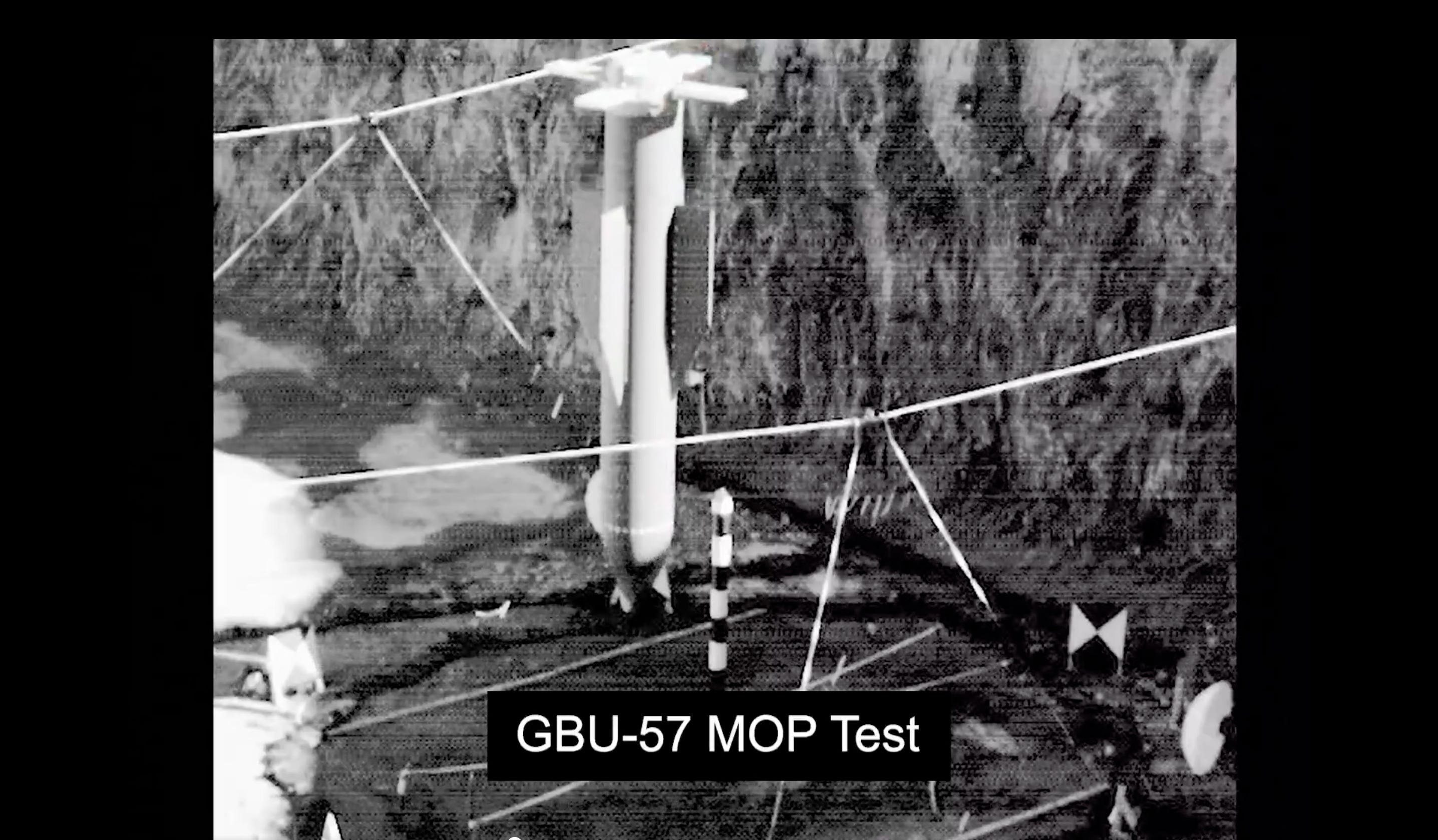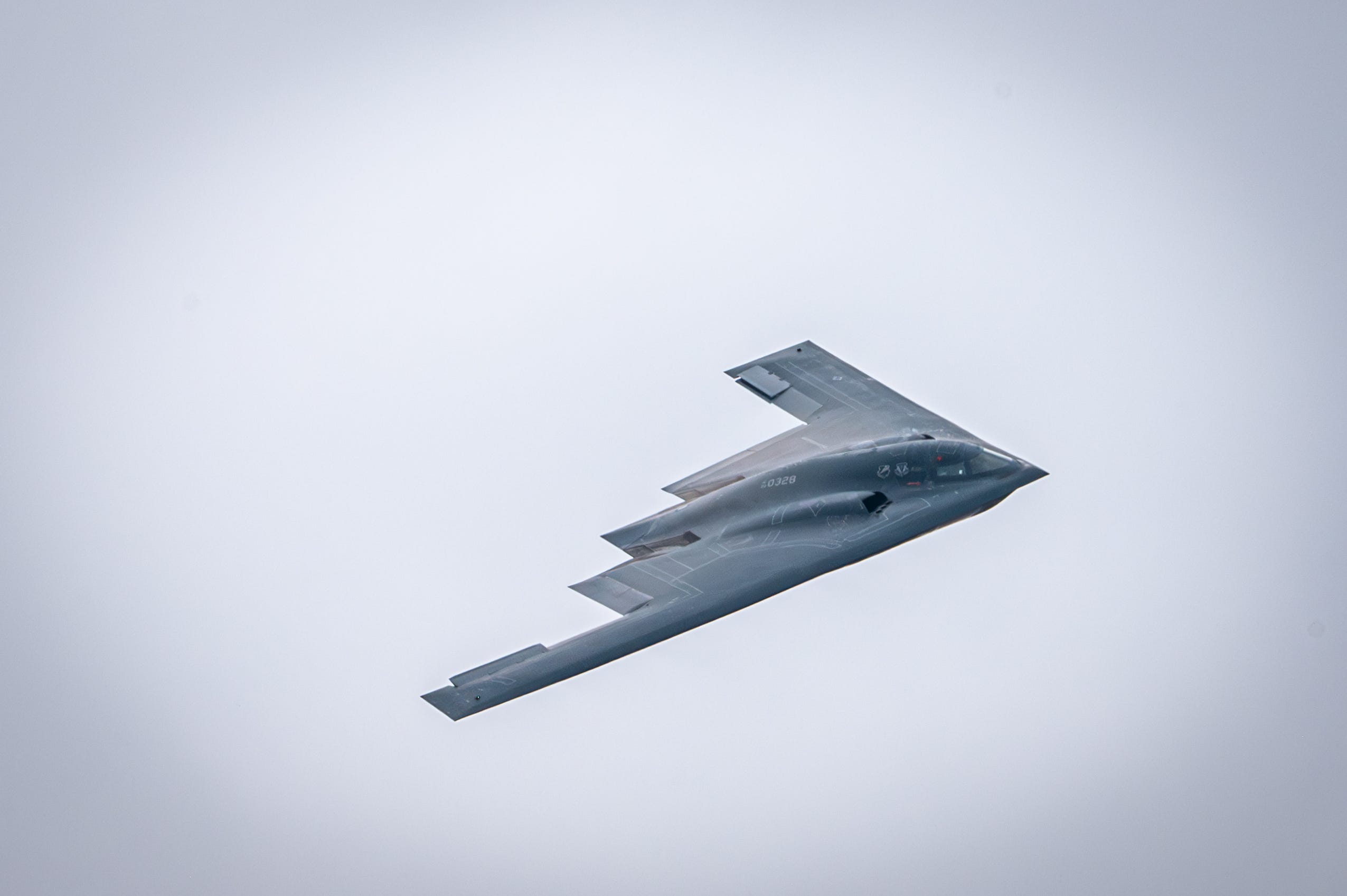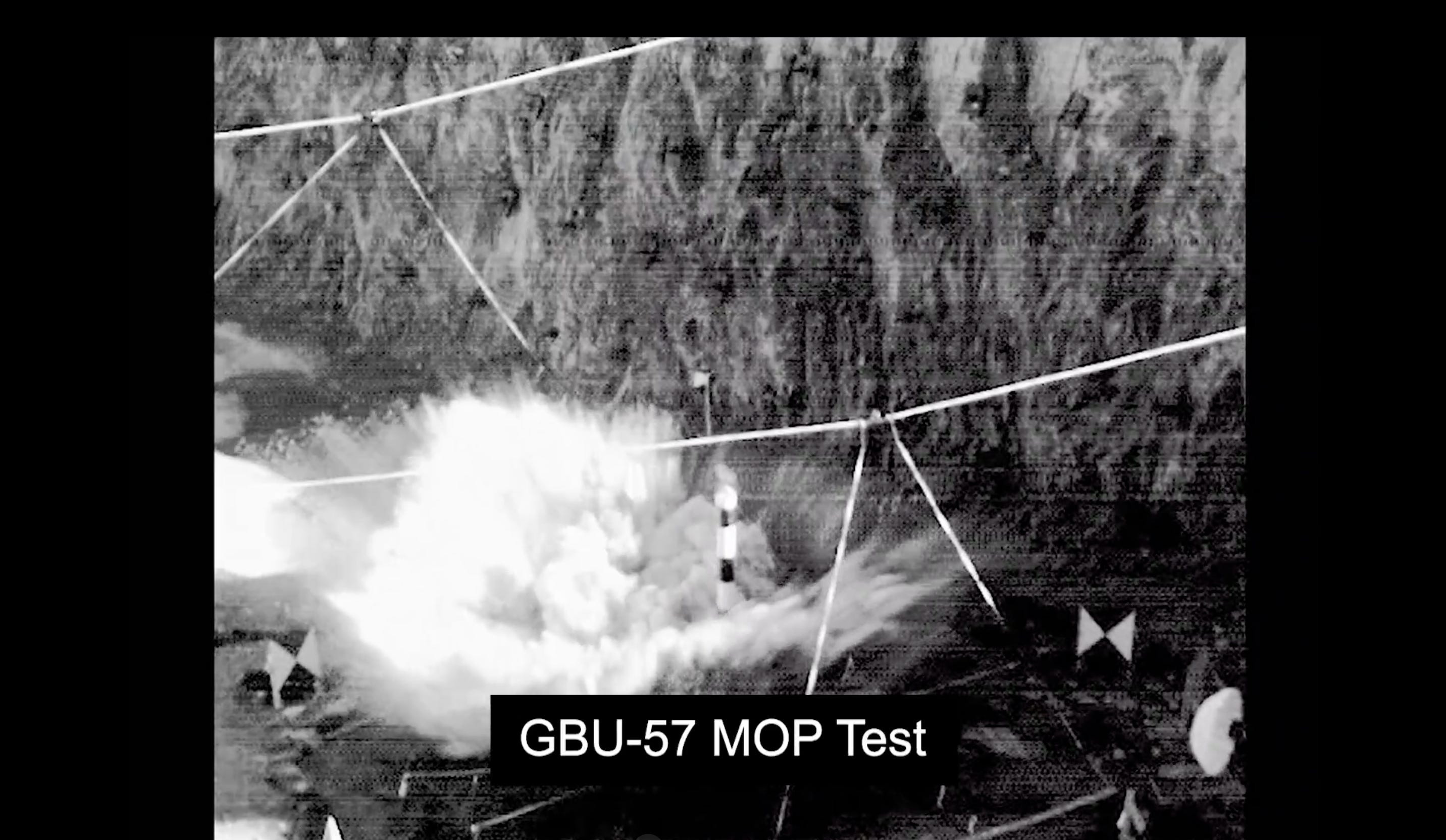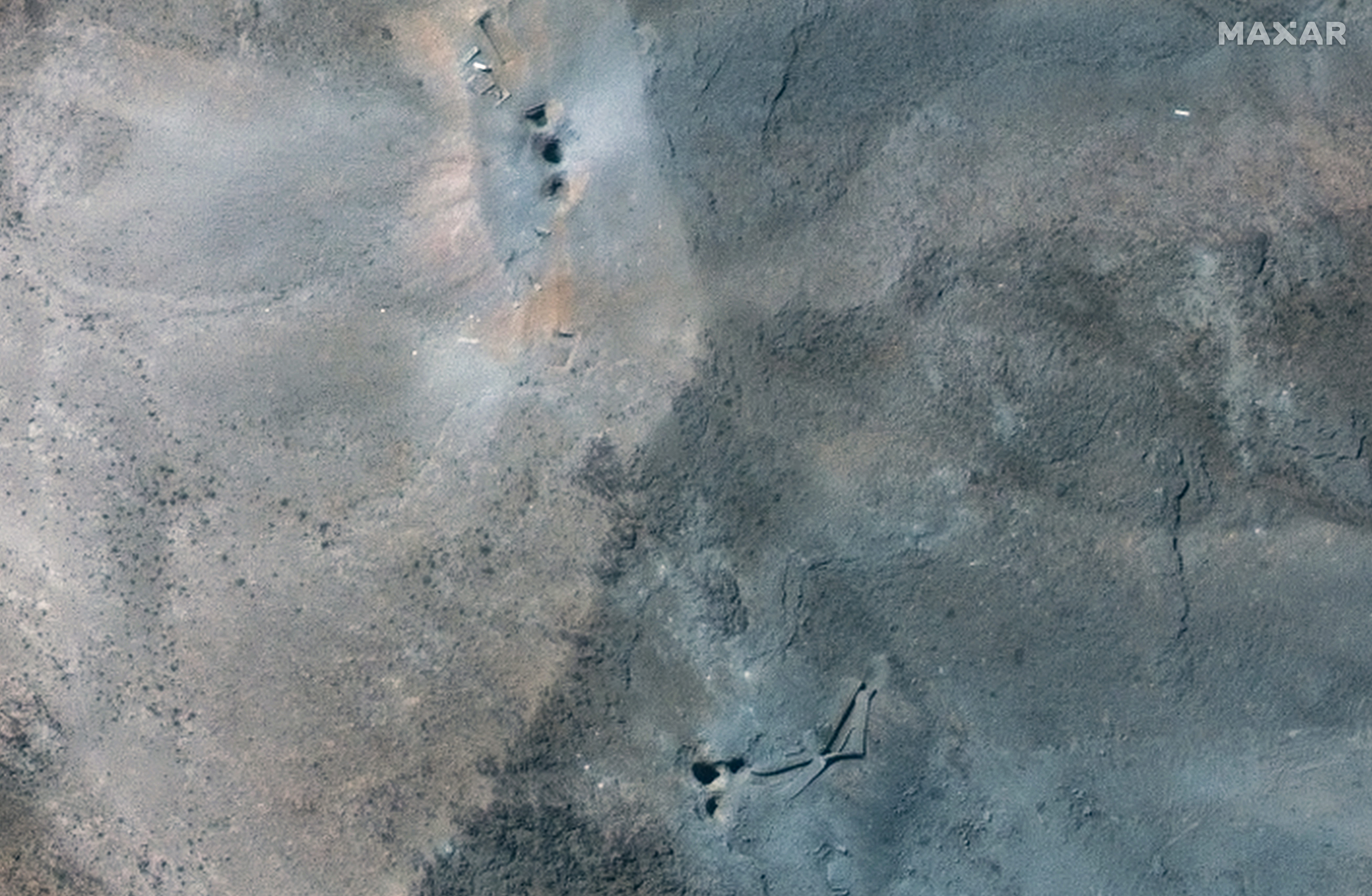
Department of Defense/Screengrab
The massive 30,000-pound bunker-buster bombs dropped on Iran’s nuclear facilities over the weekend were developed specifically to attack these kinds of targets, a top US general said on Wednesday, revealing that the military spent a decade and a half closely studying Iran’s most fortified nuclear site.
Speaking to reporters at the Pentagon, Gen. Dan Caine, the chairman of the Joint Chiefs of Staff, described the lengthy development of the heavy GBU-57 Massive Ordnance Penetrator, offering a look into elements of the making of the US military’s largest non-nuclear bomb.
During Operation Midnight Hammer, US Air Force B-2 Spirit stealth bombers dropped 14 MOPs, a dozen of them on the Fordow enrichment site and two more on the one at Natanz. The strikes, part of a highly secretive and complex operation, were years in the making.
Back in 2009, unidentified officers with the Defense Threat Reduction Agency, which specializes in deeply buried underground targets, were briefed on a major construction project in Iran — specifically Fordow, which Caine described as a “critical element” of Tehran’s covert nuclear weapons program.
The DTRA officers studied the Fordow site, which is built into a mountain, closely for years. Caine said they eventually realized that the US didn’t have a weapon that could be used to attack the facility, so they started working with the defense industry partners like Boeing and Northrop Grumman to further develop the MOP.
The bomb was part of a DTRA technology demonstration program until 2010, when the weapon became a part of the Air Force’s Quick Reaction Capability Program, per the air service.

US Air National Guard
The massive bomb was tested hundreds of times. Many full-scale munitions were dropped on “extremely” realistic targets with the goal of having a weapon that the US could use against Fordow at a time and place of its choosing, Caine explained.
That day came just a few days ago, when President Donald Trump ordered the B-2s to bomb Fordow.
Strikes on Iran
The extremely heavy MOP is around 20.5 feet long and has a diameter of 31.5 inches. The warhead alone weighs 6,000 pounds, and it can penetrate deeply buried facilities up to around 200 feet deep. The B-2 is the only operational aircraft that can carry the weapon, storing two internally to preserve stealth.
Caine said that the MOP is made of steel, explosives, and a fuse programmed to achieve a specific effect inside Fordow. Each bomb had a unique impact angle, arrival, final heading, and fuse setting, which determines when the weapon would explode.
A longer fuse creates a delay, meaning the MOP can penetrate deeper into the target before it explodes.

Department of Defense/Screengrab
Fordow had sets of three holes — a main exhaust shaft and two additional ventilation shafts — visible on the surface. Caine said that in the days leading up to the attack, Iran attempted to cover the shafts with concrete.
Talking about one target point, which was hit with six of the large GBU-57 bunker-busters, Caine said that the first MOP “forcibly removed” the concrete cap, exposing the main shaft. The next four MOPs entered that shaft, traveling toward critical Fordow facilities at speeds faster than 1,000 feet per second and exploding inside. The sixth bomb dropped was a flexible option if something didn’t work the way it was intended.
“Unlike a normal surface bomb, you won’t see an impact crater, because they’re designed to deeply bury and then function,” he said. Satellite imagery showed the holes where the MOPs penetrated the surface at Fordow, but not a substantial impact crater at the site.
Caine said all six weapons dropped on the vents went where they were meant to go. He shared that the “primary kill mechanism” at the site was a mixture of blast and overpressure, which would have ripped through the open tunnels and destroyed critical hardware.
He said the US military does not really do battle damage assessments, noting that “by design, we don’t grade our own homework — the intelligence community does.”

Satellite image ©2025 Maxar Technologies
However, he did say that the big MOPs were built, tested, and loaded properly; released from the B-2s properly; navigated to their intended targets as intended, and functioned as designed, “meaning they exploded.”
“We know this through other means — intelligence means — that we have, that we were visibly able to see them,” Caine explained.
The Trump administration has touted the strikes on Fordow, Natanz, and Isfahan — the latter being a third nuclear facility that US forces targeted over the weekend with Tomahawk cruise missiles — as a major success, with top officials asserting that Iran’s ability to build a bomb was set back years. Israel’s Atomic Energy Commission has offered a similar assessment.
Rafael Grossi, the United Nations nuclear watchdog chief, said that Iran’s nuclear facilities suffered significant damage, although he said using the term annihilation would be a step too far. He also said the whereabouts of Tehran’s stockpile of highly enriched uranium — which is needed to make a weapon — is unknown. Reports suggest it was hidden ahead of the US strikes.
An early US intelligence report indicated that the US strikes may have only set Iran’s nuclear program back by months, not years. Some analysts have also questioned the effectiveness of the recent strikes, with some observers suggesting Tehran could quickly rebuild damaged infrastructure and enrich its highly enriched uranium stock to the weapons-grade levels needed to make a bomb.
The post Top US general says roughly 15 years of planning to defeat Iran’s most fortified nuclear site centered on this massive 30,000-pound bomb appeared first on Business Insider.




